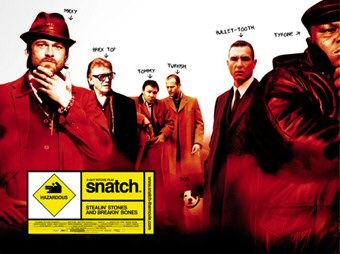How
have the Coen Brothers developed as auteurs?
Films:
Item 1- No Country for Old Men (2007)
This film is the second highest grossing Coen brother’s film at $88m to
date, it is a thought provoking film that is crafted to make the audience think
a certain way. The lack of a sound track only exists to further present the
unique way the film was crafted, the lack of extra characters makes it feel as
though the characters are stuck in purgatory with little hope of reprieve.
Item 2- Fargo (1996)
Fargo
is perhaps one of the earliest films that cements the brothers unique style,
the film shares many themes with the later ‘No Country for old men’ including
the violence it exhibits and the unique directing style. However the comedic
aspect of the film lends itself to other popular Coen brother films yet still
creates a narrative that is as intriguing and suspenseful as the more serious
toned ‘No country for Old Men’
Item 3- The Big Lebowski (1998)
The Big Lebowski is possibly
one of the Coen brother most well known films, it has quotable dialogue and
interesting characters. As with many Auteurs they have re-used actors who
frequently star in their other films – Namely John Goodman and Jeff Bridges –
this demonstrates the pair’s commitment to their brand of film making as they’ll
only use a select group of actors
Item 4- O Brother where art thou?
(2000)
This film continues the brothers’ blend of comedic adventures, returning
yet again with a familiar cast. John Goodman continues his type casted role as
big and loud, it contains a lot of elements that one would expect from
depression era Mississippi; featuring chain gangs, Klan rallies, and blues.
Although it is overall a lot more light hearted than most Coen brother films
their ethos is apparent here through their style and the nuances in their
narrative and camera work.
Item 5- True Grit (2010)
True grit shares a
lot of similarities with ‘No Country for Old Men’, it explores themes of convictions
and is violent with mature themes. It’s a modern take on the western genre that
has been absent from Hollywood in the last 15 years, and ‘No Country for Old
Men’ can be directly correlated to that, although it has a modern day setting
it also is a contemporary western, also sharing characters such as Josh Brolin –
Albeit it in a smaller role.
The Internet:
The website discusses the Coen
Brother’s impact more in depth in transforming themselves to mainstream icons, despite
their esoteric and more indie themed films. They show that it is different from
the loud blockbusters of today and the nuances involved in a Coen brothers’
film.
The blog runs down some popular Coen brother films and their impact on
how they have developed, I’ve used a number of these films in my list as they
represent the values that make the brother’s film making set apart from other
mainstream directors and how they have developed their own style as a result,
from their more indie focused beginnings to their modern releases that can
appeal to a wider and more diverse audience despite them changing little and
remaining faithful to their formula
Item 8- https://vimeo.com/106099732
This video gives
evidence of their development and the common themes and tropes that make a Coen
brother films, it is a good reference when discussing their evolution
throughout their careers as it goes in depth – film by film, which helped me to
compare the different films throughout the decades much easier.
This piece in the Guardian comments on the Coen brothers’ whole careers
and just what makes them the way they are, it was helpful as it isn’t in the
guise of a review but just an analysis of their character and their form of
film making and what exactly makes it them the way they are.
This Wikipedia article acted as a
biography and similar to the previous article showed me their history and why
they are who they are. It also provides useful statistics such as their entire
filmography and the various awards they have won.

